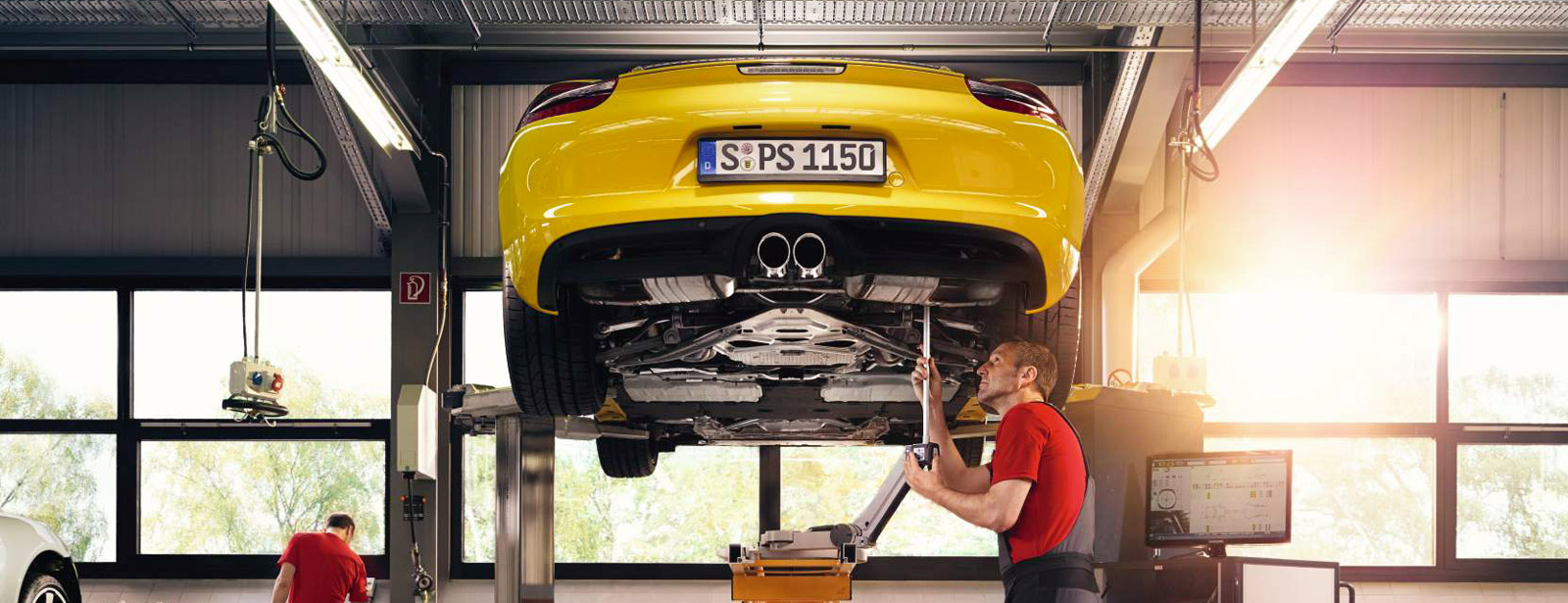
Lightweight repair expertise
For us, there's only one standard when repairing lightweight bodyshells. The
We've been championing the sports car concept since 1948.
And controlling every gram.
Lightweight design. A feature of the very first

Continuous development.
Also applies to lightweight bodies and lightweight bodyshell repair.
One of
But what does multi-material mix mean for you in terms of bodyshell repair? Basically, the same as always:

When repairing
If they're damaged, new vehicle technologies require new diagnostic and repair procedures. Because the new materials and assembly methods also make the repair more challenging. In the case of traditional steel bodies, the diagnostics are carried out using gauges on the straightening bench, whilst multi-material mix bodies are measured digitally – using extremely low measuring tolerances. And welding is also no longer the leading assembly method. It is increasingly being replaced by bonding and riveting.

Example 911 (Type 991)*: compared to the Type 997, the number of welding points has been reduced by around 50%. More than 2,000 punched rivets are now used (Type 997: 0), together with over 120m of adhesive joints (Type 997: 12m).
So with all this complexity, who better to perform these repairs than those who designed and built the vehicles?
After all, we have no lack of expertise. We have over 70 years' experience in repairing
To ensure that the adhesives used on structural components can harden, all
Incidentally: if your
How do we add value?
By providing additional services.
So as to ensure that your visit to our workshop is as efficient and smooth as possible, your